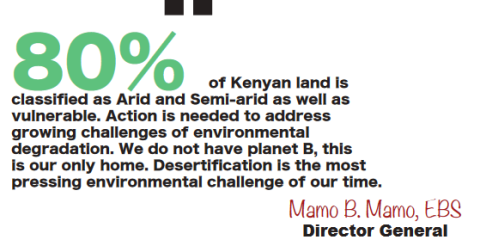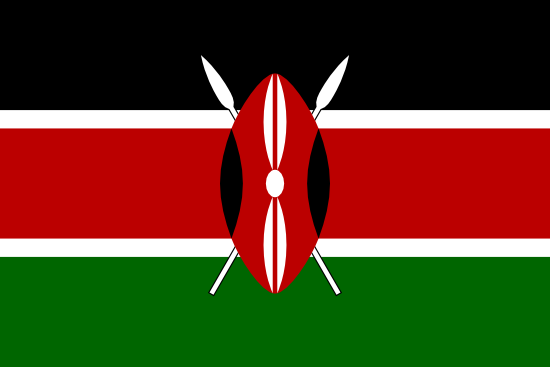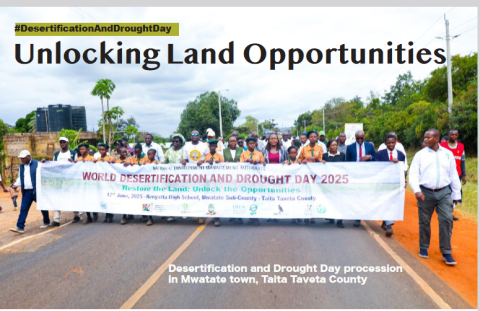Unlocking Land Opportunities
Desertification and Drought Day formerly World Day to Combat Desertification and Drought is observed on 17 June to promote public awareness of international efforts to combat desertification.
Kenya ratified the United Nations Convention to Combat Desertification (UNCCD) on June 24, 1997. The UNCCD itself was adopted on June 17, 1994 In 2025, Desertification and Drought Day focused on one of the most urgent global challenges: restoring 1.5 billion hectares of degraded land and jumpstarting a trillion-dollar land restoration economy by 2030.

Under the theme “Restore the land. Unlock the opportunities,” the 2025 observance shines a light on how restoring nature’s foundation—land—can create jobs, boost food and water security, support climate action, and build economic resilience.
Most importantly, the event is celebrated to remind humanity once again and again on the need to continue investing their efforts in safeguarding Mother Nature or our environment by adopting activities such as land restoration to sustainably combat the spread of desertification, land degradation and drought.
In Kenya, the national event was held at Kenyatta High School, Mwatate Sub-County of Taita Taveta County.
The Chief Guest, Hon. Salim Mvurya, CS Ministry of Youth Affairs, Creative Economy and Sports was accompanied by CS Ministry of Environment, Climate Change and Forestry, Dr. Deborah Barasa, and CS Hon. Beatrice Askul for East African Community (EAC), Arid and Semi-Arid Lands (ASALs) & Regional Development.
Other dignitaries included Governor and Women Representative Taita Taveta County H.E Andrew Mwandime and Hon. Haika Lydia Mizighi respectively; President Advisor on Women Rights in Kenya, Harriette Chiggai; NEMA officials led by
Chairman, Emilio Mugo, Director General Mamo B. Mamo, EBS, Mamo, EBS, Board of Management and representatives of other state departments. CS Dr. Barasa stated that the precious, beautiful and fascinating landscapes are now facing threats of land degradation with the Arid and Semi-Arid Lands (ASALs) being the most vulnerable. Recent reports
show that the greatest part of our total land mass in the country is already affected by land degradation
She stipulated that effective implementation of policies, strategies and plans will result in sustainable land restoration models which is necessary for driving sustainable environment conservation that will contribute in addressing the risk for the spread of desertification, exacerbation of land degradation and drought.
Kenya has aligned with provision of this SDG 15.3 by setting the Voluntary Land Degradation Neutrality targets and accordingly has been fast-tracking implementation of the LDN targets through various strategies aimed at balancing the amount and quality of healthy land to support ecosystem services making major strides towards implementation of UNCCD.
“Desertification is the most pressing environmental challenge of our time. 80% of Kenyan land is classified as Arid and Semi-arid as well as vulnerable. Action is needed to address growing challenges of environmental degradation. We do not have planet B, this is our only home, “NEMA Director General, Mamo b. Mamo, EBS said.

